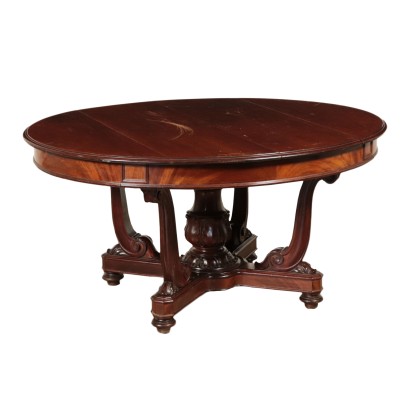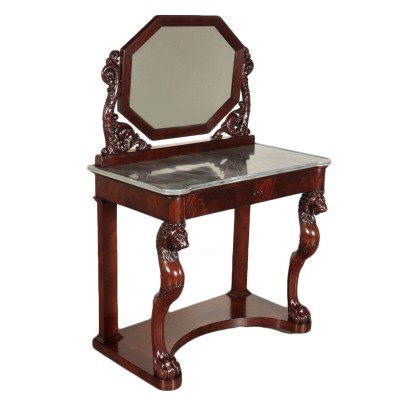Table Louis-philippe to the Basket
Features
Style: Louis Philippe (1830-1848)
Age: 19th Century / 1801 - 1900
Origin: Genova, Liguria, Italy
Main essence: Mahogany
Description
Table genoa Luigi Filippo basket, mahogany, and oak, dating back to the mid-NINETEENTH century. The baluster central and four swirls curls that rest on a base of four supports supporting the floor, and shooting. Under the latter, a joint, there are the legs, turned to hold, the cords are removable, unfortunately, missing.
Product Condition:
Product in good conditions, shows some signs of wear.
Dimensions (cm):
Height: 74,5
Width: 151
Depth: 130,5
Maximum size (cm):
Width: 465
Certificate issued by: Enrico Sala
Additional Information
Style: Louis Philippe (1830-1848)
The Louis Philippe style develops in a context characterized by two main factors: the expansion of the bourgeoisie and the advent of the industrialization of production processes.This style therefore faces the decline of artisans and the new needs of economy and comfort.
Aesthetically it incorporates elements from the past, especially from the Gothic and the Renaissance, preferring very curved shapes for the seat backs, legs and deer-like feet, with a very rich decoration.
It mainly uses dark woods: ebony, rosewood and mahogany, side by side for contrast with light elements.
Find out more with our insights:
The Louis Philippe style
Classic Monday: Luigi Filippo and Umbertina consoles in comparison

































